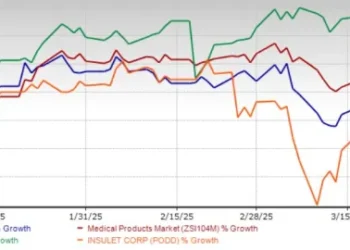On a quiet Tuesday afternoon in March, a cryptic internal email circulated through the National Institutes of Health (NIH), addressed to key staff members involved in funding logistics. It was concise and chilling: the awarding of new grants to a select group of top-tier universities was to be halted immediately, and communication with these institutions was not to occur “under any circumstances.” The message, reviewed by this reporter, specifically instructed staff to “not provide any communications to these schools about whether or why the funds are frozen.”
There was no official press release. No formal policy announcement. No Congressional testimony or public-facing rationale. And yet, for the past several weeks, administrators at several leading research universities—from Ivy League campuses to powerhouse biomedical research centers on the West Coast—have reported the abrupt disappearance of anticipated NIH funding streams. New applications have stalled. Renewal discussions have gone cold. Inquiries are met with radio silence.
What’s unfolding is a coordinated and unprecedented withholding of federal science funding from some of the nation’s most prestigious institutions. And it’s happening without explanation.
A Freeze in the Dark
Investigative reporting has confirmed that at least eight research-intensive universities have been affected by this apparent funding freeze, with sources at three institutions independently verifying that they were expecting NIH funding decisions in early April that have not arrived. In each case, follow-up queries to NIH liaisons were rebuffed or ignored.
At the heart of the issue is the lack of transparency. According to multiple current and former NIH officials—some speaking under condition of anonymity for fear of retaliation—the freeze appears to have been directed from high levels of NIH leadership, potentially in consultation with other federal agencies. No one would confirm whether the move was politically motivated, but the suddenness and secrecy have raised red flags.
“This goes beyond procedural delay,” said one former NIH grants manager who reviewed the internal memo. “It feels strategic. And it’s targeting very specific institutions, not across the board.”
Why These Universities?
Sources familiar with the situation suggest that the targeted institutions may share more than just academic prestige. Several are actively involved in federally funded research related to politically sensitive topics: gain-of-function virology, public health surveillance, artificial intelligence in health care, and foreign collaboration protocols, particularly with Chinese institutions.
The shadow of geopolitical tension looms large. In recent years, scrutiny of American research partnerships with Chinese scientists has escalated sharply. The FBI and the Department of Justice have launched multiple investigations into alleged breaches of grant compliance, especially around intellectual property and disclosure of foreign affiliations.
A 2021 Senate report found “systemic failures” in how NIH monitors foreign influence in biomedical research. In response, the agency promised tighter oversight. What is unclear now is whether this freeze represents a continuation of that strategy—or a fundamental shift toward punitive funding policy.
Dr. Marian Soto, a policy analyst at the Center for Science and Democracy, says the implications could be profound. “If NIH is selectively withholding funds from institutions without disclosing the basis, it’s not just administrative opacity—it’s an attack on the norms of scientific independence.”
Collateral Damage
The freeze is not just a bureaucratic hiccup—it has real-world consequences. At one prominent university in the Midwest, a research team studying Alzheimer’s biomarkers had been preparing to launch a clinical trial with NIH support slated to begin in late spring. Now, the project is in limbo.
“We’ve got IRB approvals, patients lined up, infrastructure in place,” said the lab’s principal investigator. “But no funding. And no explanation. It’s like the faucet was shut off overnight.”
Young investigators and postdoctoral researchers are particularly vulnerable. Many rely on timely grant cycles to sustain employment, laboratory access, and career momentum. For them, even a temporary disruption can be existential.
“There’s a generational impact here,” said Dr. Ilan Bhatt, an epidemiologist and grant reviewer. “You’re stifling innovation before it gets out of the lab.”
A New Kind of Censorship?
Some academic leaders see the freeze as a veiled form of political pressure—an attempt to curb certain lines of inquiry or assert ideological control over science funding. Several mentioned that the targeted universities had previously published research that conflicted with official narratives on pandemic response, vaccine efficacy, or national security implications of global scientific collaboration.
The concern is not unfounded. In recent years, both Republican and Democratic lawmakers have taken aim at perceived ideological bias in federal science agencies. While NIH has largely avoided the culture war crosshairs trained on the CDC or EPA, that immunity may be waning.
The directive to avoid communicating with affected institutions raises additional ethical alarms. “It’s one thing to pause funding for legal or procedural reasons,” said Dr. Laura Chen, a professor of health law. “It’s another to do so in silence and deny institutions the right to understand or respond. That’s not just bad governance. It borders on censorship.”
Inside NIH: Dissent and Discomfort
Even within NIH, there is internal unease. Several program officers have expressed discomfort with the freeze and the directive not to communicate. “We’re being asked to ghost entire institutions,” said one. “It feels antithetical to everything NIH is supposed to stand for.”
A spokesperson for NIH, when contacted for comment, declined to answer specific questions about the freeze, stating only that “the agency continually reviews its grant-making practices to ensure compliance with federal standards and national interests.”
Such vague language is unlikely to quell mounting concern. Lawmakers on the House Committee on Science, Space, and Technology have reportedly requested a briefing on recent changes to NIH funding protocols. Whether that leads to transparency or more entrenchment remains uncertain.
What Comes Next
The NIH freeze comes at a time when public trust in science is already strained. If the agency responsible for funding the nation’s most critical biomedical research is seen as acting arbitrarily—or politically—the damage could extend far beyond this funding cycle.
For now, the silence continues. Universities remain in the dark. Researchers are left to speculate. And a core question hangs in the air:
When science becomes policy—and policy becomes politics—who decides which questions are worth asking?
And what happens when the answers are too inconvenient to fund?















